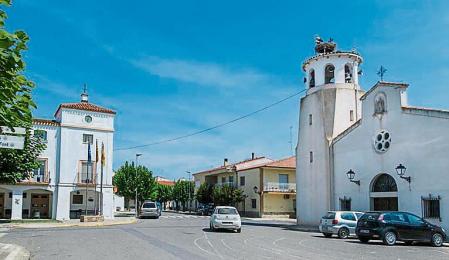The National Colonization Institute (INC) was born in 1939 with the aim of reactivating agricultural production after the devastation of the Civil War. The creation of new irrigation was accompanied by the creation of new population centers. One of the colonization towns considered to be the most representative is Vegaviana, in Cáceres, the work of José Luis Fernández del Amo, perhaps the most outstanding of the architects who worked for the INC. In the book ugly spain Andrés Rubio says that the residents of Vegaviana prevented the complex from being declared of cultural interest on two occasions. This qualification, which would have given them aid for the rehabilitation, was perceived as an annoying bureaucratic corset by the inhabitants, whom Rafael Fernández del Amo, son of the architect and architect himself, tried in vain to convince of the need to conserve the enclave in tune with its original spirit. The design of the town, which at the time received prestigious awards, has been the subject of numerous studies, and its relevance in the recent history of Spanish architecture is beyond doubt. But none of that was enough to convince its inhabitants of how privileged they were to live in such a place. The question is: why does Vegaviana not like its neighbors?
Surely the answer would be the same if we were referring to the majority of Spanish cities and towns, whatever their origin and history: due to a lack of love for our shared heritage. I want to say with this that, over the last decades, we have seen that same attitude everywhere. Could it be that, in the case of the colonization towns, this lack of love was increased by their initial identification with the Franco dictatorship, which made their flag, and by the traditional economic prostration of its inhabitants, peasants far from the main centers of power, alien to the great currents of history, ignored by an eminently urban culture?
Born in the middle of nowhere, they were peoples without a past, but also without a precise idea of the future
The fact is that these towns have always suffered from low self-esteem, despite the fact that some of the best Spanish architects of the time worked in them and they arouse more and more interest among scholars. Several of those architects, by the way, came from the ranks of the victims. I can imagine how exciting the challenge must have been: to create former nihilo a population, determine from plans the future life of a community. Born in the middle of nowhere, they were peoples without a past, but also without a precise idea of their future, as if destined forever to remain anchored at the very moment of their foundation. They lacked cemeteries: death was still a remote hypothesis.
In their own way, each one of these towns was also an ideal representation of the closed Spain of autarchy: small communities with a vocation for self-sufficiency that lived practically isolated from the world and that, like DNA molecules, reproduced on a very reduced scale the structure whole of the entire society. Some sixty thousand families settled in the around three hundred towns built by the INC in its thirty years of existence. Adding up the following generations, we are talking about many, many people, and yet it does not seem that life in those towns has left any trace in Spanish literature (unlike what happened in Italy, where similar experiences inspired Antonio Pennacchi the celebrated novel Canale Mussolini ). Nor has cinema traditionally paid attention to the vicissitudes of the inhabitants of these towns, but their peculiar photogenic nature has seduced two excellent film directors, Paula Ortiz and Pilar Palomero, whose films Route Y the girls they were partially shot in settlement towns: in El Temple, in the province of Huesca, the first, and in Gimenells, in Segrià, the second. The fact that recent cinema has focused on these towns, even if only as a set, certifies the validity of this architecture as a generator of a powerful arsenal of images: spaces, volumes, white walls, flat lands, remote horizons, essential geometries to which the void, as in De Chirico’s painting, brings a rare spirituality, closer to heaven than to freshly watered earth.

